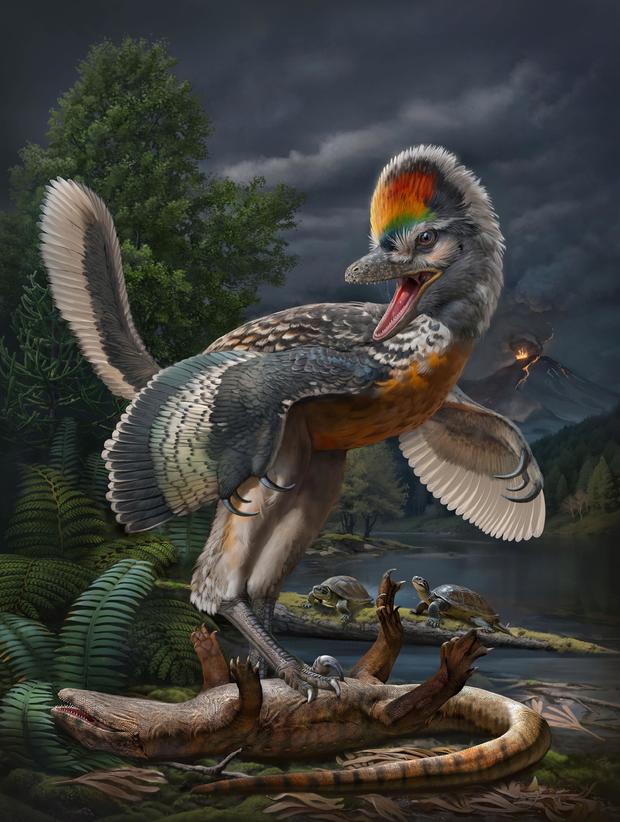Scientists have known for some time that birds like chickens and ostriches are the closest living relatives of the Tyrannosaurus rex. Now, a newly discovered fossil of a bird-like dinosaur could answer some evolutionary questions.
The unusual fossil, dubbed a Fujianvenator prodigiosus, is of a bird-like dinosaur with surprisingly long lower legs, researchers wrote in a study published Wednesday in the journal Nature. The fossil is from the late Jurassic period, which is believed to be when birds diverged from bipedal dinosaurs. But scientists’ understanding of this evolutionary divergence is limited because not many fossils from the era have been found.
The new fossil is estimated to be between 148 to 150 million years old. It may be the youngest known member of the Jurassic avialans, which researchers described as the group of organisms that contains both modern birds and bird-like dinosaurs.
“Early bird evolution is complicated,” Hailu You, a palaeontologist at the Chinese Academy of Sciences in Beijing and one of the co-authors of the paper, said in a Nature post about the study.
ZHAO CHUANG
A reconstruction of what the researchers believe fujianvenator prodigiosus looked like shows a feathered dinosaur with a tail. Only some of the tail was preserved in the fossil.
Researchers said the “bizarre assembly of morphologies” shows the impact of evolutionary mosaicism, the concept that change can happen in some points of the body without simultaneous changes in other body parts.
Fujianvenator prodigiosus was pheasant-sized with a lower leg that was twice as long as the thigh, scientists wrote. It’s believed to have been either a high-speed runner or a long-legged wader. Other bird-like dinosaurs from the period were believed to have flown or spent their time in trees, but the fujianvenator prodigiosus is believed to have lived in a swampy ecosystem.
This is backed up by the other fossils found in the area, which included turtles and ray-finned fish, according to the study.
Thanks for reading CBS NEWS.
Create your free account or log in
for more features.












